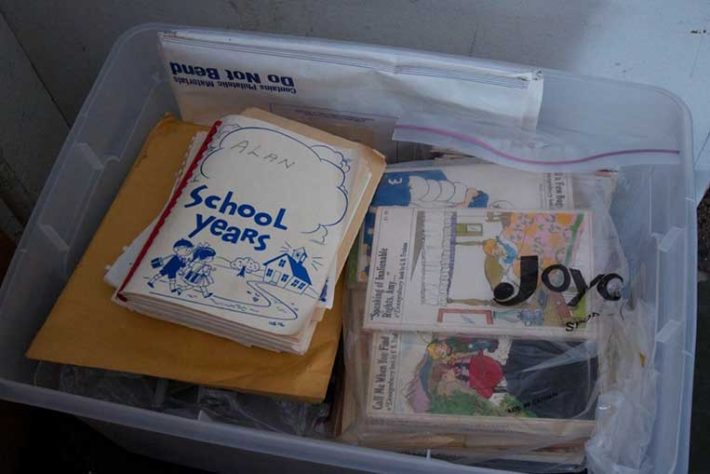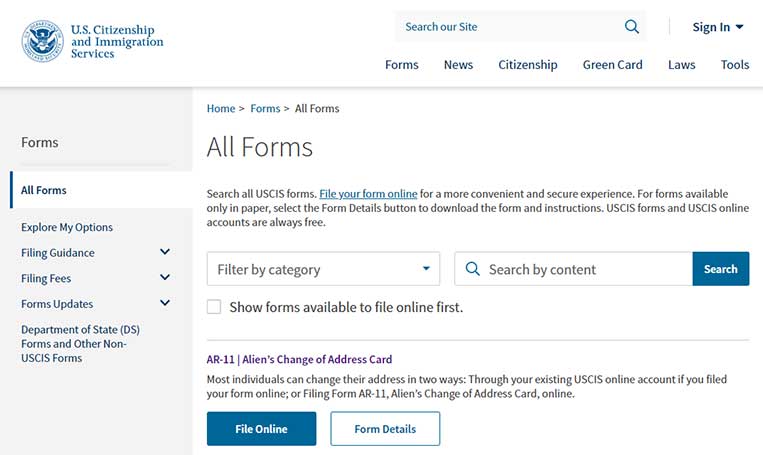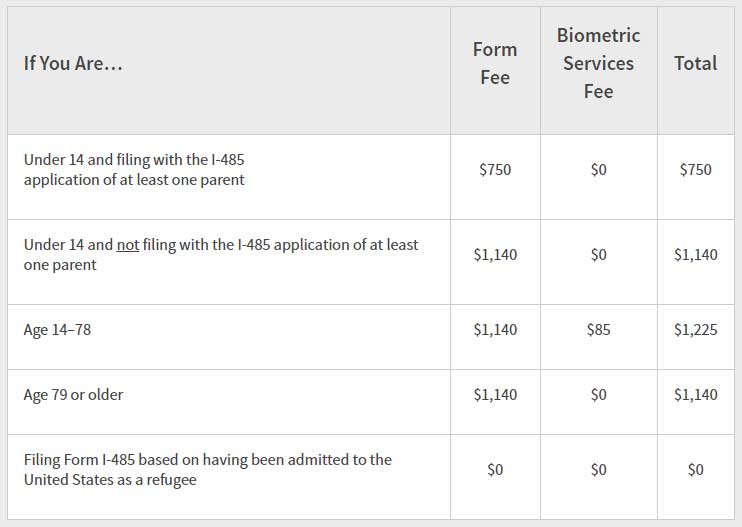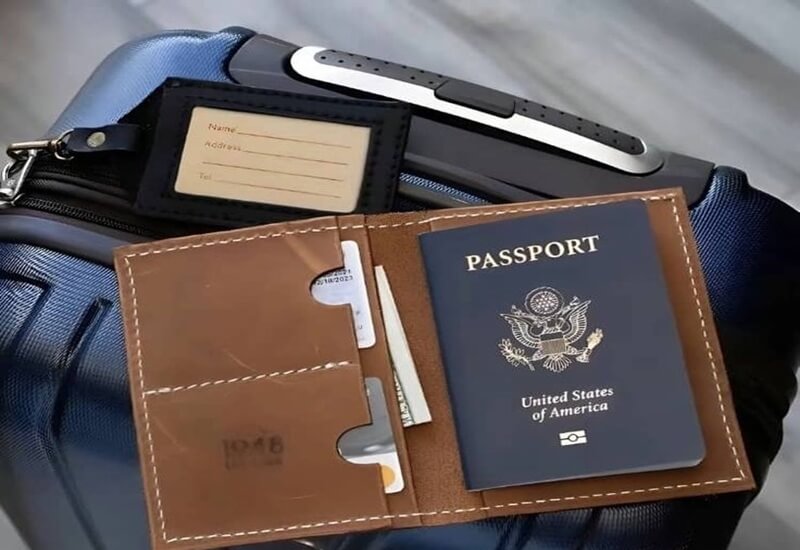What Documents Do You Need To Start Your Case?
Every immigration case begins with collecting several documents to prove physical presence in the United States. Different documents are needed for different types of cases and it can get overwhelming, but don’t let this stop you from applying for relief. We’re here to help you stay organized.
Every client in our firm works with a Client Care Specialist, whose job it is to help you think about how to get the documents and the evidence needed. We can overcome almost any document hurdle this way.
If you don’t have a birth certificate or you haven’t been married that long and you don’t have good faith marriage evidence or you’re having trouble coming up with physical presence evidence, we work with you to figure it out.
The most important thing to do is to get started on your case and if you run into hurdles we’ll help you.

What Type Of Evidence Is Most Commonly Requested?
DACA Initial (Applying For DACA For The First Time)
After you hire us, you will receive our welcome email with a list of documents to prepare for your case:
1. Identification Document: This can be either your birth certificate or the certified English translation along with a school ID or anything that has a picture of you. Other options include and are not limited to: your passport, consular card or Mexican matrícula.
2. Continuous Residence: For example: Someone that came into the United States when they were eight years old and right away were enrolled in school. They could use those school records from 2008 to 2013 to prove all of their continuous residence. It would prove that they came in before their 16th birthday or before June 15th, 2007. A school record would help prove all of that. You can also provide any diplomas or certificates. The hardest part of proving Continuous Residence is that you have to have proof dated since June 15, 2007. Any document that has your name, date and address of a location here in the U.S. can be used to prove presence.
3. Proof of Presence for June 15, 2012: This is a hard document to get because you need to prove that specific date. It might be easier to prove if you attended summer school during that time. Any document that has these three main data points helps: Name, Date, Address.
Vaccination records, receipts, utility bills, phone records, bank statements, hospital or medical records will all definitely help to prove your Continuous Presence since you came to the United States to present.

What are some tips and tricks to prove presence during an extended period of time when you weren’t in school?
Scenario: Someone who’s applying for a DACA Initial and graduated in 2012 has nine years of physical presence to prove without school records.
Documents You Can Use For Proof: Pay stubs and bank statements. If you were employed and you were receiving any sort of pay, those pay stubs become really useful. If you have any bank accounts, it can also be really useful to request statements from your bank.
Tax returns — either your own or your parents if you were claimed as a dependent. If you have filed for a return yourself, it’s going to have a Form W-2 or a Form 1099 that will cover your work history from the whole previous year.
We have a vlog where we talked to a specialist in taxes from Foundation Communities and she answered some of our frequently asked questions from the immigrant community about filing taxes.
How Do I Look This Up On My Own?
Visit USCIS.gov on their “All Forms” platform and look for the one you want. There’s a specific website on each form type.
You have to be careful about the forms you are required to submit according to the case you’re trying to start. Almost every case has multiple forms required to submit as a packet.
It’s sad when people miss this requirement and lose three, four or five years waiting to take the next step when they could have gotten a Green Card from the beginning.

What’s tricky — and what’s not available on the USCIS website — is the overall strategy of how to do a case, how many forms are needed and how to get to your end goal as quickly and efficiently as possible.
If you know exactly what form you need, the USCIS website can be really helpful. You’re always going to have the PDF form that you can fill out and save. These forms have instructions where they list the minimum requirements of evidence that you need for a form type.
We often submit more than what is required because we want to have success on the front end of a case. We don’t want to get a request for more evidence or have any complications.
On the form page on USCIS.gov you can check the filing fee too. We refer to it often.
What Evidence Is Recommended For Someone With Almost No Documents?
It can be hard for stay-at-home moms, for example, to gather documents of Continuous Presence Evidence. In most Latin American countries, the man is the one that has all the bills under his name and the moms are left out.
If the mom has children, her pregnancy records, medical records, vaccinations of the babies, dental visit, the child support checks or the kids’ school records where they are listed as the parent can all qualify as evidence.

Adjustment Of Status A.K.A. One Step
We call it a One Step internally because you file seven or eight forms at once. This case is one where it’s not clear on the USCIS website exactly what forms you need. It’s really easy to get it wrong.
For any case we’re going to need birth certificates, so that’s a given across the board.
For an Adjustment of Status, you need to provide a birth certificate for both the beneficiary and the petitioner, as well as their marriage certificate.
If it applies, you will also need all previous divorce decrees. If you re-married various times you must be divorced legally to remarry. A divorce decree helps to prove the validity of your current marriage.
If there are any children involved, copies of their birth certificates will also be necessary.
Something to note is that any document that gets sent to USCIS that is in another language other than English has to be translated and include a translation certificate.
Terminology to remember: the beneficiary is the immigrant and the applicant for the Green Card. The petitioner is the one who is submitting the petition, such as U.S. citizen spouse.
Immigration can be one of the reasons for your marriage as long as it’s not the only one. Here are some ways to prove that you have a good-faith marriage.
Always provide as much official evidence as you can. This is preferably five or six items that could be proof of you living together and perhaps sharing finances.
These items could include: a lease contract, shared bank account, shared credit cards, shared phone account, shared auto insurance, medical insurance or life insurance policies.

People can get stuck on the “squishy” evidence like Facebook posts announcing your engagement or the affidavits (the letters from friends and family). This is the kind of evidence that is much easier for Immigration to pick apart.
We don’t want to add the “squishy” evidence unless we don’t have any official evidence. This evidence is not reviewed when we submit the application. Immigration officials don’t make a determination of the marriage at the beginning.
They forward it and review to make sure the minimum requirements are met and then they send it to the field office for an interview.
At the final adjudication, which is the interview, they look through the evidence and make sure you have enough. You can bring more evidence to the interview.
Therefore, if you only have a few documents of evidence now, you can spend the year that it takes for the case to be pending to start adding yourself to each other’s accounts, keep documenting more evidence, and then bring this packet of additional evidence to your final interview.
The petitioner is always the sponsor in these cases, but if the petitioner can’t prove that they’re earning more than 125% of the poverty guidelines, then the applicants are going to need a joint sponsor who also submits that financial evidence.
The hardest parts of a One Step or Adjustment Case are the joint financial details, which include the public charge documents for the applicant and the good-faith marriage evidence.
Filing Fees
You can look up the filing fees on any form page on the USCIS website. The I-485 form page is a great example to show how complex the filing fees can be because it depends on your age, your status and whether you need to pay for biometrics or not.
You have to be really careful because if you get the fees wrong you’ll get your packet rejected, which can lead you to lose a month or two off the processing time of your case. That whole process of rejecting a packet takes about that long, and that’s time lost because nothing gets submitted until you get a receipt of the packet.

VAWA – Violence Against Women Act
This program is not only for women. It is for spouses, parents, or children of citizens or residents who are suffering mistreatment in the relationship.
It’s a way to file for a Green Card without the assistance of the petitioner. You still have to prove good-faith marriage, like we reviewed with the One-Step cases. All of that same evidence — proof of cohabitation, etcetera — you have to submit with your VAWA application.
There’s an additional requirement of evidence of abuse or extreme cruelty.
One thing to highlight are the police reports. You don’t necessarily have to have this stuff for VAWA.
We’ve had tons of VAWA cases where there was no official evidence of abuse except for the affidavit of the victim or a witness statement or something like that.
If you have police reports, protective orders, any medical record, a statement from a therapist that’s been treating you or witness affidavits, you can add that on to a VAWA application, in addition to the good-faith marriage evidence.
It happens regularly that the victim doesn’t have proof of the abuser’s status. For example, she knows her husband is a U.S. citizen, but he keeps her in the dark and doesn’t give her access to his identity documents. She could still file a VAWA case.
If you don’t have this documentation, you just have to submit an affidavit stating your abuser’s name, their place and date of birth, etc. and USCIS can look it up for you.
There are different checklists for every single case type.
In our firm we have Client Care Specialists whose job is to help our clients with this phase of the process.
When you’re gathering all this stuff together, and it can be a little daunting and pretty invasive that immigration officials ask for all of this, so we’re here to help you through that process.
If you have any questions about it just reach out, contact us, text or call us (855) 599 8500.

Frecuently Asked Questions About Immigration Documents
Contact A U.S. Immigration Attorney Today!
Categories
How To Find Us
What Our Clients Say
“This Lawfirm is great, very professional and helpful. I love that they are always in communication and always available for when you have questions . 100% recommended by me and my family. Thank you Lincoln-Goldfinch Law – Abogados de Inmigración”





